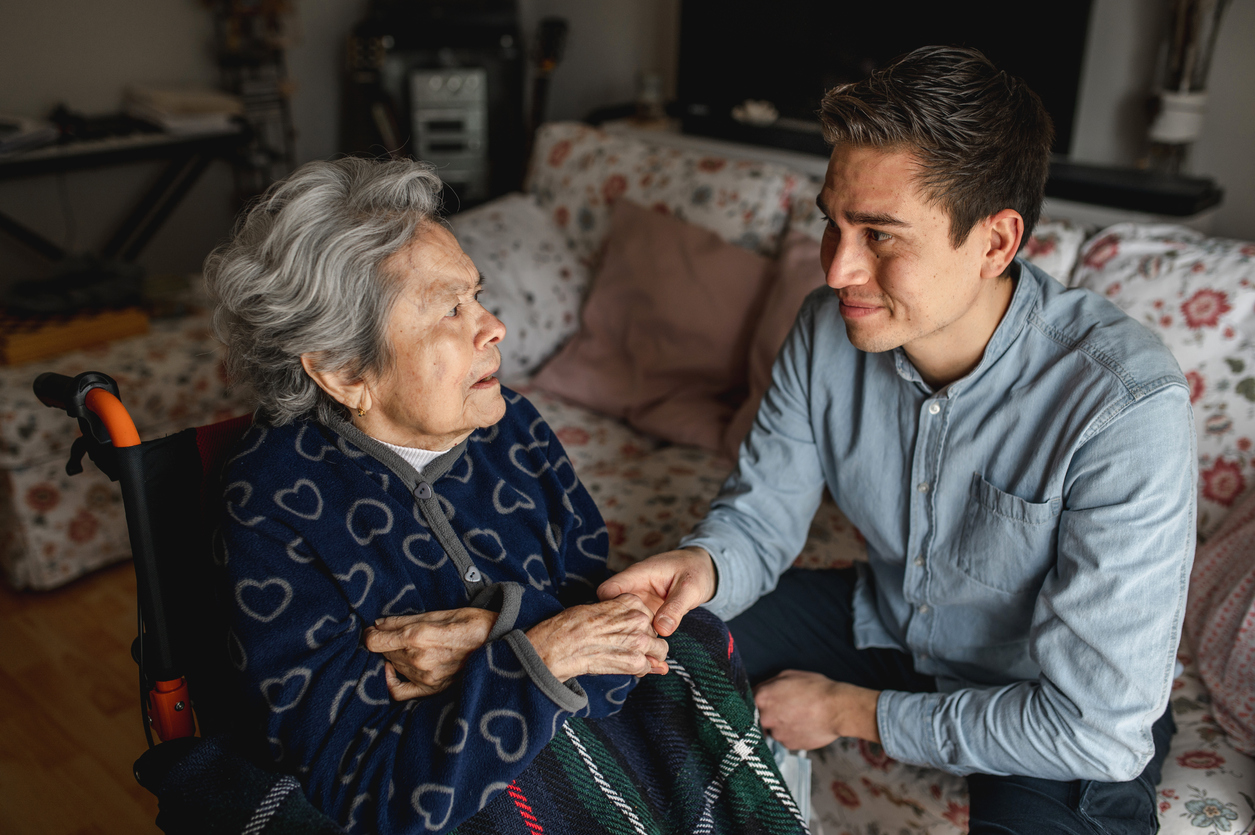As more senior adults choose to age in place, family members increasingly bear the responsibility of ensuring their loved ones can live safely at home. Whether it’s helping them out with chores around the house or providing full-time support, it’s estimated that there are now 48 million family caregivers within the United States. And as caregivers try to balance their personal life with the needs of their loved ones, their stress has also increased significantly. FirstLantic explains the importance of recognizing caregiver strain and techniques to address it.
Causes of Stress
Caregiver stress can stem from a variety of factors, including increased responsibility, time demands, unfamiliar medical and nursing tasks, and the financial burden. A recent AARP report found that the average family caregiver spends $7,242 a year on their loved one’s care, including housing, health care, and other necessities. And six in 10 caregivers help with medical and nursing tasks such as operating ventilators, home dialysis, administering injections, and keeping track of multiple medications.
Recognizing Strain
The additional work, the mental stress, and a lack of sleep and physical activity can take their toll on the caregiver to the point when they become overwhelmed with stress and anxiety. Some signs of caregiver strain include:
- Constant worry and fatigue
- Unusual gain or loss of weight
- Irritability or mood swings
- Social withdrawal and loss of interest in hobbies
- Feeling emotionally drained
- Frequent headaches, bodily pain, or other physical problems
- Abusing alcohol or drugs, including prescription medications
What To Do
If you or someone you know is experiencing any of the symptoms described above, that’s not rare. 14.5% of caregivers reported experiencing 14 or more mentally unhealthy days in the past month, while 17.6% of caregivers reported experiencing 14 or more physically unhealthy days in the past month. In addition, 37% report getting insufficient sleep. But some steps can be taken to reduce stress, and it starts with prioritizing your own well-being. The fact is that it’s impossible to properly take care of someone else unless you take care of yourself first.
- Accept help. You don’t need to do it alone. Whether it’s getting support from other family members, friends, or other resources, you should not be afraid to ask for help and accept it. Home healthcare services can provide daily care or come in for just a few hours a week. Adult daycare centers or community groups are options and non-profits that can help with transportation or meal delivery.
- Join a support group. It’s hard for people that are not taking care of someone else to truly understand what it’s like to be in your situation. So, seek out other people that can relate and be your sounding board.
- Stop feeling guilty. That’s easier said than done, but you must give yourself a break. It’s important to recognize and acknowledge that you can’t do everything. Try to be kind to yourself and don’t feel bad for taking some time to do something each day that you enjoy. It may be as simple as going for a walk or treating yourself to a Latte, but you must carve out time for you to take care of you.
- Set realistic goals. Break large tasks into smaller projects that you can do one at a time. Prioritize, make lists, and try to stick to a daily routine.
- Don’t neglect your own health. Set aside time several times a week to be physically active, eat a healthy diet, and drink plenty of water. Consider taking a yoga or meditation class and practice breathing exercises to reduce stress.
- Consider taking time off from work. Balancing work outside with the work within the home can become overly taxing, so consider taking a short break to focus more on yourself and your family member. Employees covered under the federal Family and Medical Leave Act may be able to take up to 12 weeks of unpaid leave a year to care for relatives.
Summary
In summary, caregiving can be rewarding, but it also can be overwhelming. Caregivers need to take care of their well-being, but they also need outside support. A recent AARP study shows just how many family caregivers are reaching their breaking point and need assistance to ease their stress, especially financially. One solution that AARP and over 120 other organizations have endorsed is the bipartisan Credit for Caring Act, which would provide a tax credit of up to $5,000 for eligible working family caregivers. The credit would help defray home care aides, adult day services, and more. Hopefully, this bill will be passed into law soon because caregivers provide so much valuable help, but they also need our help.
For Eldercare resources, click here.
To find out about FirstLantic Healthcare can help, click here.
To read more FirstLantic blogs, click here.
 AVAILABLE 24 HOURS A DAY/7 DAYS A WEEK
AVAILABLE 24 HOURS A DAY/7 DAYS A WEEK Careers
Careers







